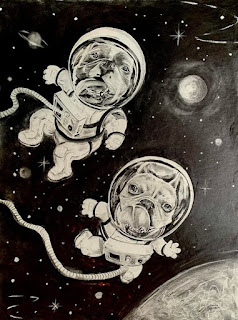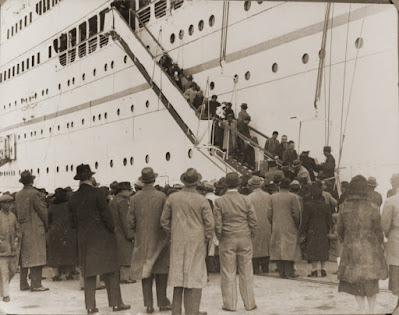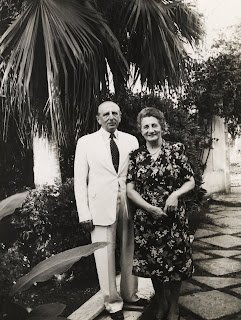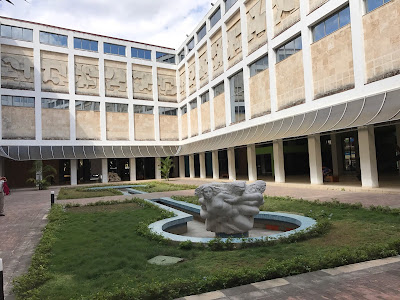People like to ask writers and artists: Please describe your daily routine. Author Andre Dubus III once replied: I sit down and do nothing. I just hold still for a while. He works in a small, basement room. No windows. No art on the walls. Whatever comes, it comes from within.
 |
| Scott Nelson: photo courtesy Worcester Art Museum |
Illustrator, author and art teacher at the Worcester Art Museum Scott Nelson has the same idea. “The work starts to get good when it becomes individualized.”
Creative expression is about communicating sometimes complex and emotional messages in ways that resonate with audiences. It’s not easy, this kind of opening up, digging deeper. Being expressive means igniting that connection between head and heart, and then making sense of whatever emotional material spews out. It takes courage to dig deep, to tap the emotional vein. And it takes a lot of practice to work with feelings — the stuff that shapes the clay.
 |
| Photo courtesy of Worcester Art Museum |
“I lived in NH at the time, and on every license plate it said, ‘Live Free or Die.’ In my mind, I always amended that to ‘Publish Soon or Die.’ That was the reality of my every waking moment.” And that’s how one writer finally found his most affecting storytelling voice, a voice that took 15 years and 15 books to fledge.
How can a writer pull life from a block of Helvetica type? Or a painter make a Starry Night from pigment?
“You need to make a strong connection with your audience. You do that through emotion,” says Scott Nelson, whose classes include illustration and bookmaking in WAM’s studio arts program. “I tell my students they can make these emotional connections through the eyes, through facial expression and body language. Young children, especially, make connections through eye-to-eye contact. Think of how babies look right into the eyes of their caregivers.”
 |
| Photo courtesy of Worcester Art Museum |
When Scott Nelson teaches his students about illustrating characters in children’s books, his first lessons involve the eyes. From there he moves to an artist’s use of body language with emphasis on the word language. He says he likes to draw his own characters as if they were macaroni people — loose and free, very natural. “Body language can be as simple as the slump of a shoulder, the arc of a spine, the way a person leans on one leg. All these little nuances, no matter how subtle, are things kids can read. Despite their young ages, they already understand body language.”
Van Gogh only painted for about nine years, beginning in 1881. He started expressing his passionate point of view by keying in on body language. “For a long time,” wrote Bonafoux, “Vincent did not paint portraits but painted only what he called ‘figures’: men and women who did not pose for their features but for a gesture, an attitude, most often associated with work. Old Man with His Head in His Hands, 1882, is a portrait not of a man but of his despair.”
 |
| Photo courtesy of Worcester Art Museum |
 |
| Photo courtesy of Worcester Art Museum |
When an artist can tap into that place where feelings reside and bring them out through their brush strokes, their fingerpicking, their interpretation of Leonard Cohen’s “Hallelujah,” then they are on their way to communicating with their audience.
Again, it’s such hard work. Sometimes, when I’m teaching or editing someone’s work, I’ll say, “You need to go deeper.” A lot happens when rewriting and revising. Writer George Saunders dug deep when he wrote “Lincoln in the Bardo.” While reading that complex, astonishing book I felt like I was right there, in the gloom and miasma of President Lincoln’s all-consuming grief at the loss of his young son. I can summon it, still.Saunders tells his writing students: “We can’t believe a
story if we don’t see it and feel it.” Rod Philbrick’s most widely read book,
“Freak the Mighty,” feels joyful at times, heartbreaking at other times. “That’s
why I write in first person. I can tell the story heart to heart,” he says.
 |
| Photo courtesy of Worcester Art Museum |
Scott Nelson produced more than 2,000 greeting cards before he moved on to writing and illustrating children’s books. He’s very focused on the customer and this orientation has served him well. “Be passionate,” he says, “but don’t be precious. Whatever story you have inside, let’s make it the best it can be.”
Nelson, a cartoonist by trade, leans toward funny stories.
“I like to laugh. It’s my thing. I also write about bullying, or, to be
precise, no bullying. That’s my well. In my classes, we process our stories
through the storyboarding. That’s where we go deeper. And that’s where it happens,
and students are always surprised. ‘I see it,’ they’ll say. ‘It’s happening.’
The story is coming to life.”
For more information:
Register for Scott Nelson’s summer class for adults on
illustrating and developing stories for children’s books:
Listening to Kids with Rodman Philbrick:
Van Gogh: The Passionate Eye
George Saunders’ Substack writing class — Story Club:
https://georgesaunders.substack.com/p/welcome-to-story-club?s=r























